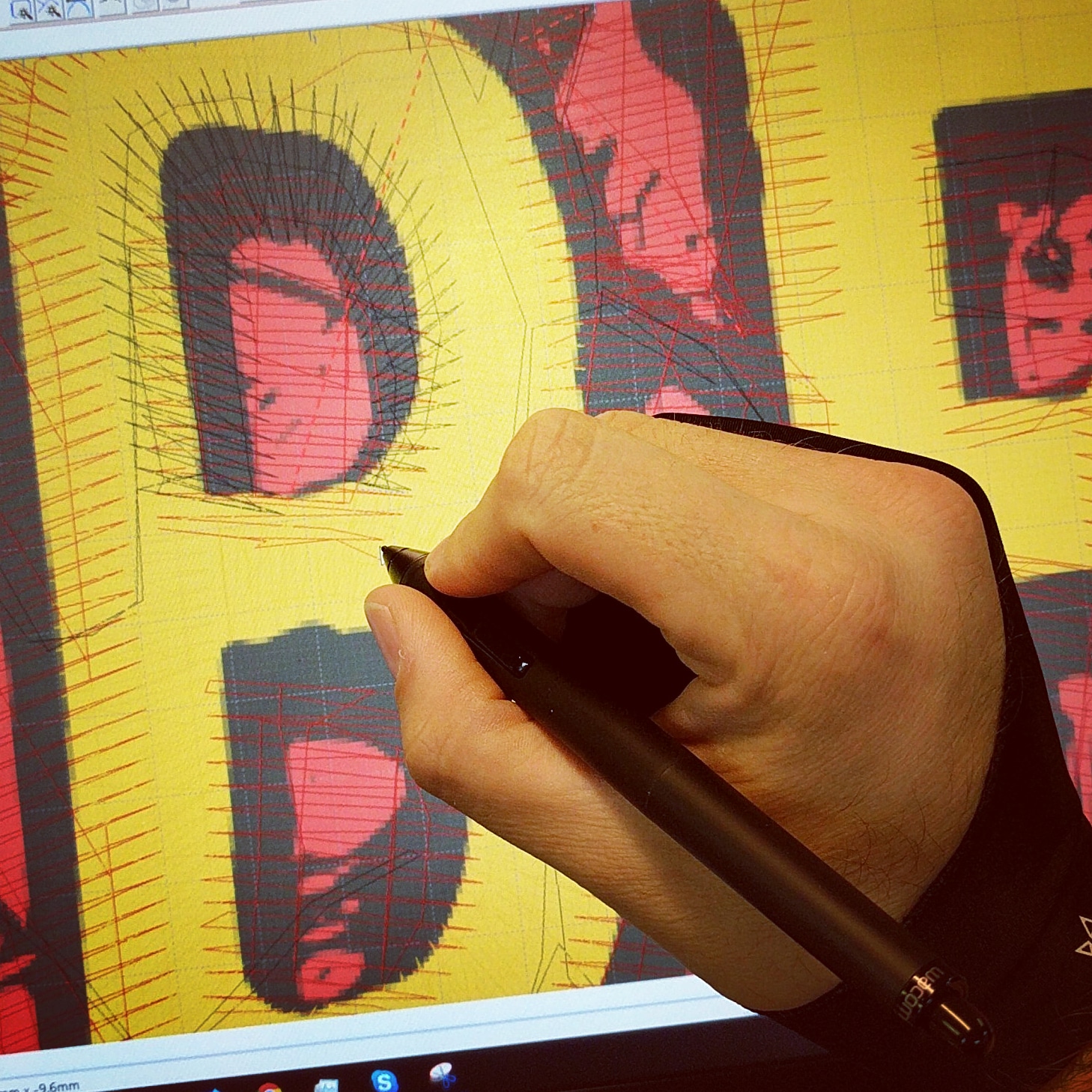Top Notch Digitizing for Embroidery: Expert Workmanship
Top Notch Digitizing for Embroidery: Expert Workmanship
Blog Article
Understanding the Needlework Digitizing Refine: Your Ultimate Overview
Needlework digitizing is a careful craft that requires accuracy and know-how to convert complex layouts into electronic styles for machine needlework. As artisans begin on this journey to master the embroidery digitizing process, an extensive understanding of the essentials establishes the structure for quality. Beyond the rudimentary expertise exists a realm of innovative software application, specialized devices, and nuanced methods waiting to be checked out. By diving right into the nuances of digitizing, one can open a world of creative possibilities and elevate their needlework tasks to new heights.

Comprehending Embroidery Digitizing Essentials
Needlework digitizing essentials form the structure whereupon elaborate designs are converted into machine-readable styles for precise stitching. This initial action in the embroidery digitizing procedure is essential for guaranteeing that the final embroidered product is a loyal representation of the initial style. Understanding embroidery digitizing fundamentals entails comprehending crucial ideas such as stitch kinds, stitch instructions, thickness, underlay, and draw compensation.
Stitch kinds play a crucial function in determining the visual and textural end result of the embroidered design. By picking the ideal stitch type, whether it be satin, fill, or running stitch, digitizers can achieve the wanted result and boost the overall top quality of the embroidery. In addition, stitch instructions influences the flow and measurement of the design, while thickness figures out the spacing and coverage of the stitches.
Furthermore, padding stitching supplies security to the layout by securing the fabric and preventing distortion throughout the needlework process. Pull settlement is another vital factor to consider to counteract the natural propensity of textile to agreement when stitched. Understanding these embroidery digitizing basics is fundamental for producing professional-quality stitched products.
Selecting the Right Digitizing Software Application
Selecting the proper digitizing software program is a critical decision that substantially affects the efficiency and high quality of the needlework digitizing process. Digitizing for Embroidery. When choosing the ideal digitizing software program, it is important to think about aspects such as the complexity of styles you prepare to create, the user-friendliness of the software, the degree of customer assistance provided, and the compatibility with your needlework machine
There are numerous digitizing software alternatives available in the marketplace, varying from fundamental programs for newbies to sophisticated software program for expert digitizers. Some popular options consist of Wilcom EmbroideryStudio, Hatch Needlework Software Application, and PulseID. These software supply a wide variety of tools and attributes to aid you produce intricate styles with simplicity.
Before making a choice, it is a good idea to explore the various software program choices with complimentary tests or demos to identify which one finest suits your needs. Furthermore, reviewing testimonials and seeking recommendations from seasoned digitizers can supply useful insights into the staminas and weaknesses of each software (Digitizing for Embroidery). By thoroughly evaluating your demands and contrasting the attributes of various digitizing software program, you can make an informed option that enhances your embroidery digitizing operations
Digitizing Devices and Strategies

Optimizing Style Settings for Embroidery
Mastering the details of design settings is essential in accomplishing optimum results in the needlework digitizing procedure, building upon the foundation laid by understanding digitizing tools and techniques. When maximizing style setups for needlework, it is important to think about aspects such as stitch type, thickness, underlay, pull payment, and enrollment. Sew type option influences the total look and feel of the design, with options like satin, fill, and running stitches providing various appearances and effects. Density describes the spacing and density of stitches, impacting the style's insurance coverage and toughness. Proper rug stitching provides security and protects against textile distortion, particularly for complicated layouts or on elastic products. Draw compensation changes for material stretch during stitching, making sure exact design replication. Enrollment settings align various elements of the design properly, keeping general design integrity. By fine-tuning these layout settings, embroiderers can boost the quality and accuracy of their stitched productions.

Troubleshooting Common Digitizing Issues
When coming across common digitizing concerns throughout the embroidery process, it is necessary to understand the origin causes and apply efficient services quickly. One usual problem is stitch thickness concerns, where stitches may be as well thick, triggering the material to tighten, or too sparse, bring about gaps in the style. Readjusting the stitch thickness setups in the digitizing software official website can help fix this issue.
Another regular obstacle is thread breaks throughout the embroidery procedure. This can occur because of different factors such as inaccurate tension settings, plain needles, or making use of low-grade string. Making certain proper maintenance of the needlework maker, including normal needle modifications and stress modifications, can reduce the incident of string breaks.
Furthermore, layout registration errors can result in misaligned aspects within the needlework layout. Checking the layout positioning in the digitizing software and making necessary changes prior to sewing can aid in avoiding this problem. By resolving these usual digitizing problems quickly and efficiently, you can guarantee a smoother embroidery process and top notch ended up items.
Conclusion
To conclude, mastering the needlework digitizing process requires a strong understanding of the essentials, the best option of software, and understanding of tools and techniques. Optimizing redirected here layout setups and fixing typical digitizing issues are vital actions in guaranteeing high-quality needlework results. By following these actions vigilantly, one can achieve accuracy and performance in the digitizing procedure.
Report this page